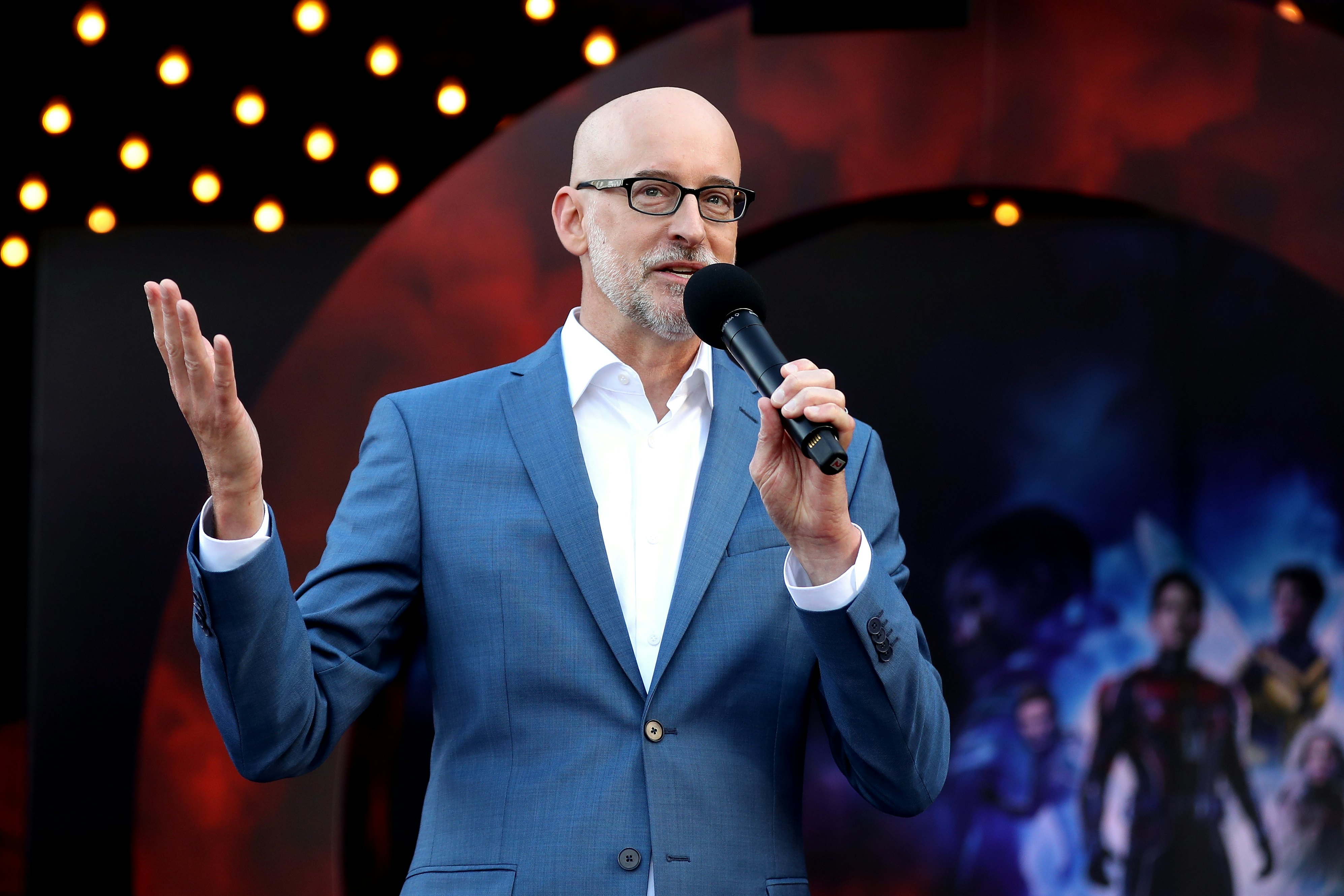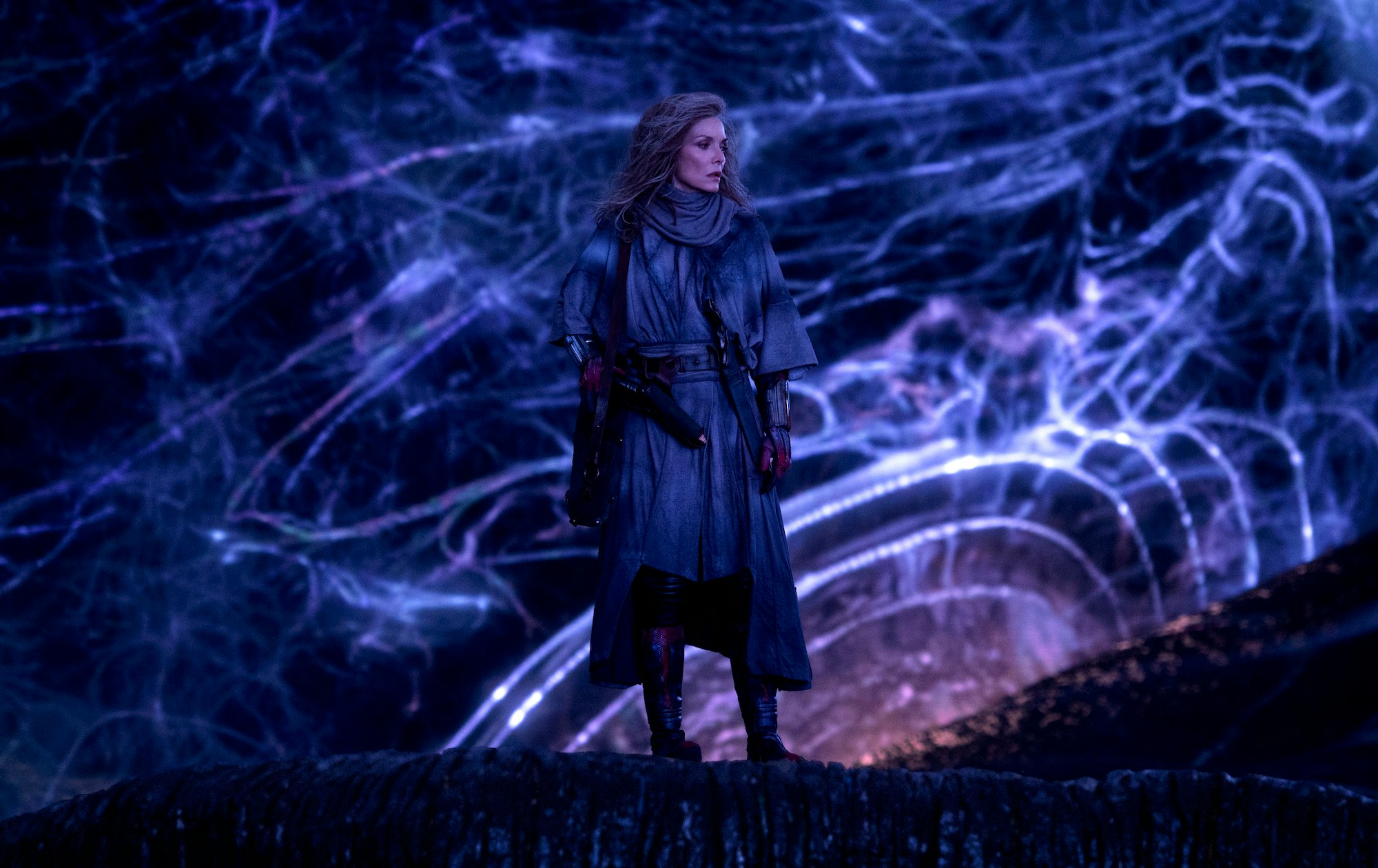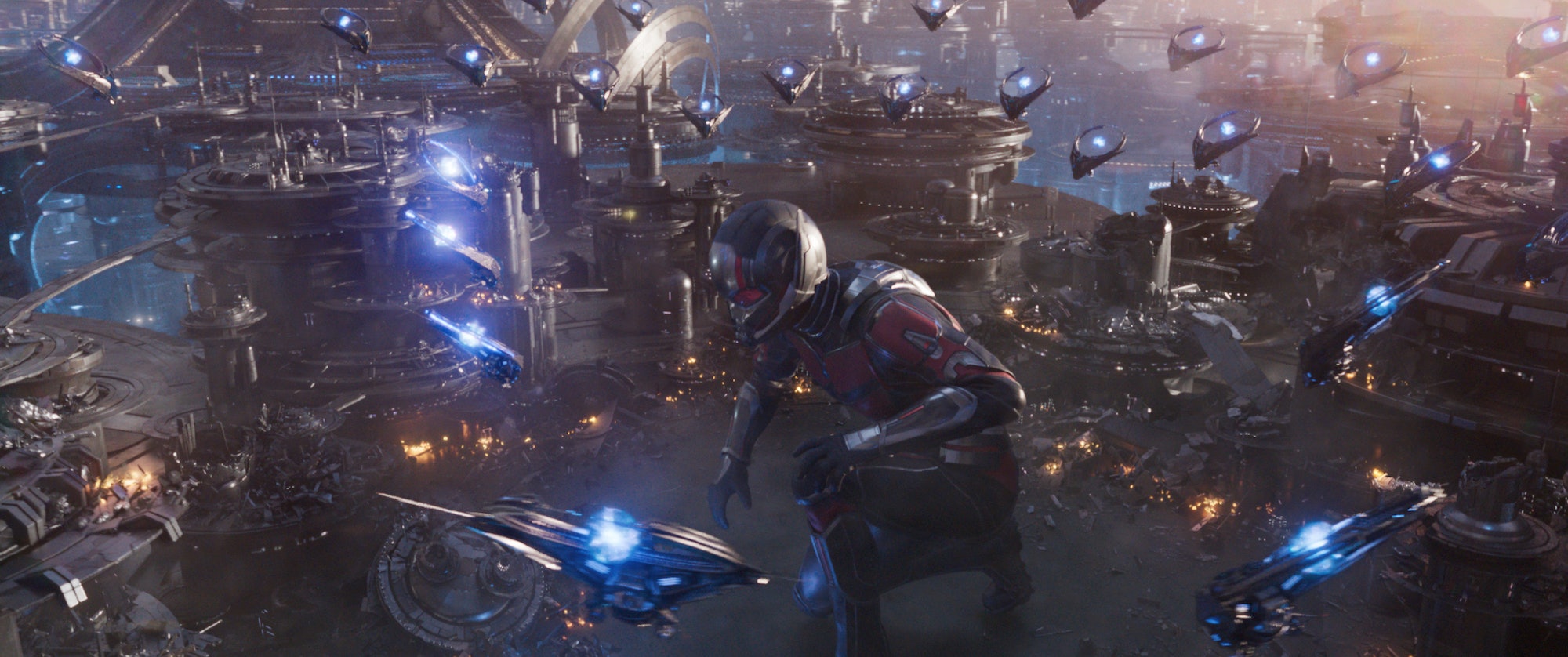
Peyton Reed has been waiting his whole life to explore the Quantum Realm. Or, at the very least, he’s been waiting for eight years and two movies. The mysterious subatomic realm was first teased in 2015’s Ant-Man, but didn’t start to take shape until 2018’s Ant-Man and the Wasp — and even then, it was just as an Easter egg.
But the Quantum Realm might not have been introduced at all if it wasn’t something that Reed and Ant-Man co-writers Adam McKay and Paul Rudd simply thought was a really cool concept.
“In the first movie, when Adam McKay and Paul Rudd and I were working on reworking the script, [we were] introducing the Quantum Realm because we love the Microverse in the comics,” Reed tells Inverse. “That was in the first movie a way to really elevate the third act.”
What started as a spark of narrative inspiration has since transformed into a crucial piece of the Marvel Cinematic Universe. Ant-Man and the Wasp: Quantumania properly introduces the Quantum Realm, a “bizarro realm,” Reed describes, where Scott Lang (Rudd) and his family are sent on a “whacked out journey” after they accidentally get sucked into the dimension in which Janet van Dyne (Michelle Pfeiffer) was stuck for 30 years.
Exploring the miniature universe also gave Reed a chance to play with tools that weren’t at his disposal in previous Ant-Man movies.
“It was important to me, as we started Quantumania, to expand the palette and make an epic Ant-Man and Wasp movie,” Reed says.
Quantumania couldn’t get more epic. Not only does it explore a whole new realm that feels more cosmic than subatomic, but it also introduces Kang the Conqueror (Jonathan Majors), a power-hungry time traveler set to become the MCU’s greatest threat yet. And Reed, a fan of Kang since childhood, couldn’t be more excited to bring the terrifying adversary against our unlikeliest Avenger.
“At first blush, that seems like a very outsized matchup. But that was intriguing to us,” Reed says.
Inverse spoke with Reed about bringing the Quantum Realm to life, the unexpected X-rated ripoff that inspired Quantumania, and why MODOK is the perfect henchman for Kang.
This interview has been edited for brevity and clarity.

The first Ant-Man movie was clearly embedded in the heist genre. Ant-Man and the Wasp felt like an ‘80s crime comedy. But Quantumania takes the biggest departure of the series and plays like a Star Wars movie. Did you set up from the beginning to make Marvel’s version of Star Wars? Or was that something that came about during the production process?
We set up certain things in the first two movies, and chief among them was the Quantum Realm. And then answering the question about what Janet Van Dyne has been doing for 30 years in the Quantum Realm: Was it a formless psychedelic void or what was it? And we knew the answer to that question was no. She described it in the movie as “worlds within worlds” and “a place outside of time and space.”
For me, assembling a team of amazing artists under Will Htay, our production designer, to create all these different environments and take our heroes on a journey was one of the most exciting things about the movie. We wanted to create something really vivid and something that had its own internal logic and internal history, and maybe its own laws of physics and all that stuff. So we brought in artists from all over.
“It's really fulfilling to now be here with Quantumania in the third Ant-Man movie.”
Really the biggest influences on me were everything from electron microscope photography to all the great artists who worked for Heavy Metal Magazine in the '70s and '80s. And then whacked out movies, everything from Barbarella to Flash Gordon. Briefly, Flesh Gordon, the X-rated ripoff of Flash Gordon. We really want to make it vivid and colorful and to really play around in a new corner of the Marvel Cinematic Universe.
It's one of the fun things for me that we — in the first movie, when Adam McKay and Paul Rudd and I were working on reworking the script — [we were] introducing the Quantum Realm because we love the Microverse in the comics. And we felt like that was in the first movie a way to really elevate the third act. But it's really fulfilling to now be here with Quantumania in the third Ant-Man movie, and really go down and explore all that. So we knew we wanted not just to take place in San Francisco, we wanted to really send them on a whacked-out journey.

This has been a long time coming, coming to the Quantum Realm. When you finally got around to it, was it something that you felt like you had a full playground just to do what you wanted? Or was it a pressure to uphold what was depicted in Marvel Comics?
We had free rein to create that, which is one of the great joys of the movie. The Microverse in the comics, the story started in the early ‘60s, and my memory as a kid reading the comics was, at some point, Dr. Doom shrinks the Fantastic Four down into the Microverse. And there were things like the Lizard Men of Tok and things that were very pulpy and based more on ‘50s science fiction. But we really had free rein, because none of the other Marvel heroes or villains had been depicted in the Quantum Realm in the movies. They pass through the Quantum Realm a little bit in Endgame as a part of their time heist, but we really just drew from whatever we wanted to do.
We had free rein to explore this part of the world. And also to introduce characters, some of whom had footing in the comics like Jentorra, Katy O'Brian's character, but other ones like Quaz [William Jackson Harper] and Veb [David Dastmalchian] were just created out of whole cloth, and that was exciting for me.
Quantumania is the first film of Marvel's Phase Five and also carries the burden of introducing the famous Big Bad, Kang. What was your main goal in giving our first real impression of him?
When we set out to do a third, I talked to Kevin Feige and I said, “I want to put Ant-Man and Wasp up against a really formidable villain.” And as a kid, I loved Kang the Conqueror. I loved reading the comics with Kang and he had been untapped in the Marvel Cinematic Universe. I think a lot of people might consider Ant-Man and Wasp that sort of lowliest of the Avengers, maybe the least powerful. I don't happen to share that view. But we like the idea of taking these unlikely Avengers and having them be the first ones who face off against this formidable antagonist — a villain who has dominion over time and who can travel the multiverse. And at first blush, that seems like a very outsized matchup. But that was intriguing to us. And that really felt good.
And also, in answering this question of what Janet Van Dyne had been doing in the Quantum Realm, we had a personal connection to this villain, because as the movie unfolds, we find out that Janet and Kang obviously have crossed paths in her previous life in the Quantum Realm. And she had not shared any of that with her family. So that felt like it tied together the big science-fiction concepts of the movie with the personal stakes.

Speaking of antagonists, let's talk about M.O.D.O.K. He is a very goofy, absurd character, even on the comic book pages. So how did you go about translating him to the big screen and making sure he was still a threatening villain, while also looking like an extremely goofy blown-up version of Corey Stoll’s head?
Well, M.O.D.O.K. in the comic books is this bizarro character and he's kind of grotesque. He's basically a floating head. And he has been turned through a series of scientific experimentations into a Mechanized Organism Designed Only for Killing. It's absurd.
We felt like the Ant-Man movies would be the perfect context to introduce this character. As we started developing the story, we felt he could kind of make an effective henchman for Kang the Conqueror. And also, as the story unfolds, we find out he also has a personal connection to our heroes. Corey Stoll is an actor who I think can do anything and he worked beautifully in the first movie. So it was a thrill to be able to bring Corey back in the role of M.O.D.O.K.
“Corey was also a comics nerd. He knew M.O.D.O.K.”
When I first called Corey and talked to him about this, I wasn't sure what his reaction was going to be. It'd be a giant floating head. But Corey was also a comics nerd. He knew M.O.D.O.K. He knew exactly what we were talking about and just leaped at the chance.
Jeff Loveness (the writer) and I love the idea of M.O.D.O.K. being a big part of Cassie’s arc becoming a hero. Because this was a guy who tried to kill her in her own bedroom when she was six years old, which is a very strange, perverse thing. And we want to see how Cassie now reacted to him as an adult.
At the end of the day this is a movie about Scott Lang and him trying to rebuild his relationship with his daughter, as well as reintroducing Cassie as sort of a hero for a new generation. So how did you juggle all those elements that you have to bring together — Phase Five, the Quantum Realm, Kang — with this story that's really about family and this new generation of heroes?
It was important to me, as we started Quantumania, to expand the palette and make an epic Ant-Man and Wasp movie. But we also didn't want to lose the intimacy of the family dynamics, because that is the spine of the Ant-Man movies: they’re about family. And it really is about Scott Lang, despite the fact that he's an Avenger, his number one motivating factor in life is his daughter. He wants to be a good father to his daughter. So in writing it, it was about striking the balance.
We introduce all the characters at the beginning in San Francisco, and they're all kind of keeping their own version of secrets. Janet hasn't talked about the Quantum Realm. Hank and Hope haven't told Scott that Cassie is working on some kind of technology. Cassie hasn't told her dad she's been in jail. Scott's the only one not keeping secrets. That struck us as something interesting. Then you thrust them into the Quantum Realm and they've all got to kind of work out these personal family dynamics in the context of this bizarro realm. So that struck us as well. But that balance was key to it.
Ant-Man and the Wasp: Quantumania is playing in theaters now.







